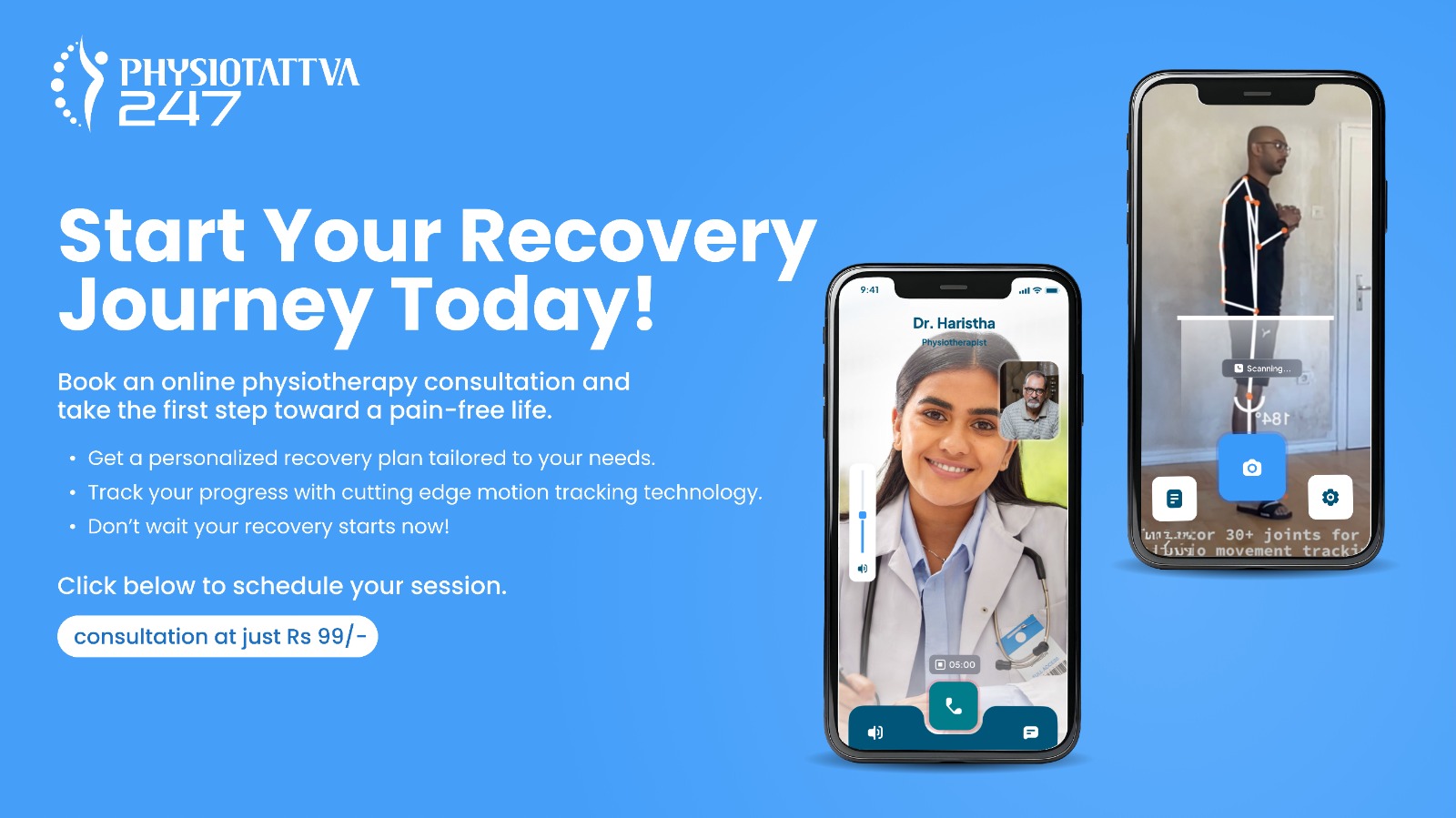What is Herniated Disc
The bones that make up the spine are cushioned by discs that act as shock absorbers for the spine. These discs are made of two layers - the center is soft and jelly-like known as the nucleus, which is encased in a tough exterior called the annulus. These work together to reduce stress on the spine in the body.
A Herniated disc occurs when the nucleus leaks out of the annulus, or the annulus has fragments that chip off. This causes the fragments to rub against the nerves and spine, causing pain ranging from mild to severe.
Symptoms of Herniated Disc
Symptoms of Herniated disc vary from person to person and based on the level of injury. The most common symptoms are a lurking pain in the lower back that extends into the buttocks, thighs, and feet. While herniated disc can occur in any part of the spine, it is most common in the lower back (lumbar) and the neck region (cervical).
You can keep a lookout for pain in these areas that travel through the legs, thighs, and the neck and shoulder region.
Another common symptom is a general numbness in these areas, that can travel to the arms and legs, depending on where the herniated disc is located.
Other symptoms are weakness and throbbing pain in these regions.
What are the Causes of Herniated Disc
A herniated disc can occur due to any physical injury that may add pressure on the spine at the lumbar and cervical parts. Injuries that impact the back and the spine such as accidents, falls, sudden pressure on the back and legs can all cause a herniated disc. Discs also tend to degenerate with age and can be a cause of the same. Ailments such as osteoarthritis can aggravate the possibility of herniated disc in older people. Newer studies have shown that there can be genetic factors such as medical history, presence of herniated disc in immediate family members can pass on to newer generations.
Lifestyle factors also play a role in the cause of herniated discs. Body posture, an occupation that involves heavy lifting, body weight, driving, and a sedentary lifestyle can all increase the risk of a herniated disc.
How to Cure Herniated Disc with Physiotherapy
Physiotherapy can help in the recovery process of a herniated disc. Physiotherapy can be introduced for care such as soft tissue massage, joint mobilization, stability of the lower back, and help strengthen the regions in order to avoid a repetition of the injury. Physiotherapy is one of the more effective options for herniated disc treatment.
Active Physiotherapy for a Herniated Disc
Active treatments help improve movement, and flexibility, and reduce inflammation and core strength in the regions.
Some of the herniated disc exercises that you can try are as follows:
Core stability exercises help greatly in the overall reduction of stress on the spine and improve body posture and mobility. It is important to keep your abdominal muscles in good health by performing various exercises such as burpees, push-ups, planks, and V hold-ups. It is advisable to chart out a physiotherapy routine with the consultation of your physiotherapist as it can be tailored according to the condition of the herniated disc.
Flexibility is another area that can help in increasing the mobility of the spine and the back. Exercise such as stretching, cat pose, camel pose, and shoulder stretches can go a long way in ensuring that the muscles and the spine are comfortable.
Hydrotherapy can be a good way to improve movements in the body when you perform water aerobics, which can help reduce the pain in movement that is otherwise found. The gentle pressure of the water against the moving body can be soothing and help recover faster.
Passive Physiotherapy for a Herniated Disc
Passive physiotherapy refers to when there is some sort of medical intervention or a situation where the patient does not have to actively engage in the recovery process.
Deep tissue massages are one form where pressure is applied to the tissues that have resulted in some sort of spasm due to various reasons. The pressure allows the muscle to relax and improves mobility in the person. This can be performed by trained professionals who will identify where the muscle needs massage and chart out the right form of massage. This will help in locating the injury and treating it at the region.
Hot and cold therapy is decided on the kind of injury and is decided by the practitioner. Heat is used to increase blood flow, which increases oxygen supply and removes any debris in the region. This helps in nourishment and heals the injury. In a cold therapy, the blood flow is slowed down, so that it cools the area and reduces inflammation using ice packs and other forms of cold care.
Transcutaneous electrical nerve stimulation (TENS) is a simple method where electrodes taped to your skin send gentle pulses of electrical current that can help reduce spasms in the muscle. This is
Prevention for Herniated Disc
Herniated discs can happen due to many reasons, while it is not possible to completely prevent herniated discs, you can always be conscious of a few things. Lifestyle is a key factor to ensure that there isn't added stress on the spine. This can be prevented through good posture, taking breaks during long periods of being seated, avoiding sudden lifting of heavy objects, and doing simple exercises on a daily basis.
It is also important to strengthen the lower back, upper back and the gluts of an individual. This will help in building resilience of the muscle and reduce the amount of stress that the bones have to endure. This will also help the person perform rigorous exercises without straining the back.
Besides these, a good diet and regular check-up with medical practitioners can also help prevent herniated discs.





.webp)
.webp)

-min.webp)

